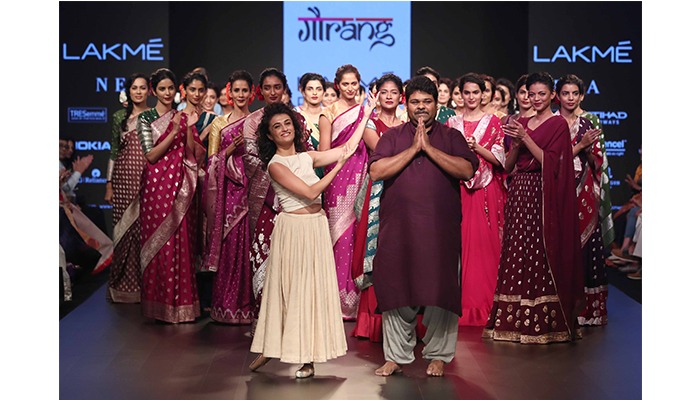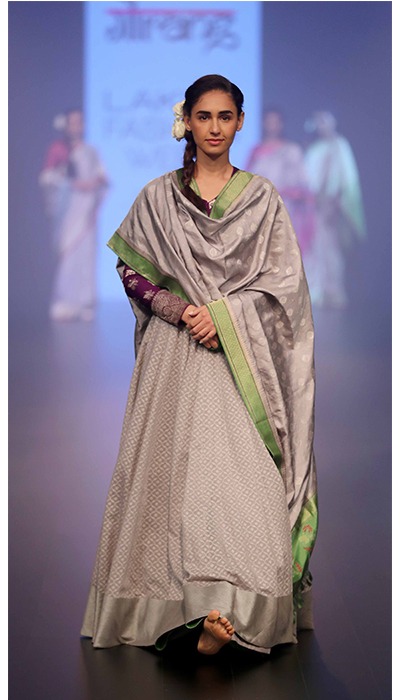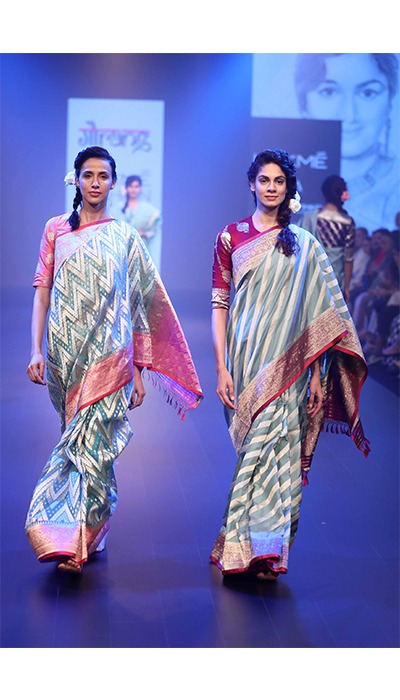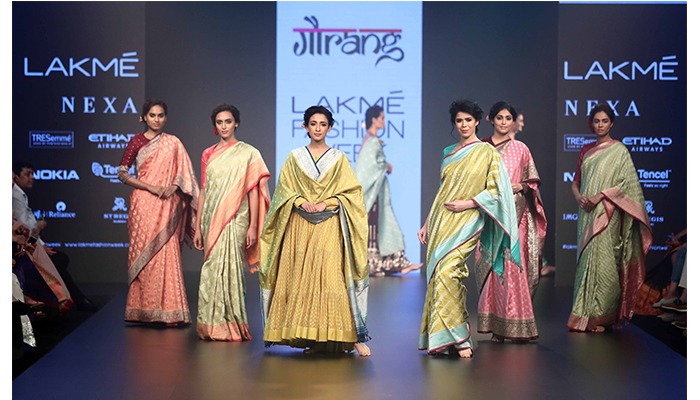
A few weeks ago, I had the pleasure of chatting up with one of my most favorite Indian fashion designers, Gaurang Shah.
Gaurang’s creations aren’t just absolutely grand and breathtaking, they’re also ethically made and sustainable in every way possible. His label constantly strives to being back ethnic Indian weaves and fabrics, and make them desirable, fashionable and contemporary once again.
So, I asked him a few questions about this journey, his beliefs, the challenges that he’s faced in building his brand into one of the best and most iconic design houses in the country and to be honest, I was totally awe-struck by how simple, humble and honest his approach was, just like his personality.
Hope you enjoy reading this and I’m sure this will inspire you (especially if you’re a young designer), as much as it inspired me!
His Journey: “For me, handloom was always a craze and sarees were always a passion… I wanted to create sarees,” he says, with that passion evident in his eyes.
“I started in the year 1999,” Gaurang says. “My store was in Hyderabad, where I started selling fabrics… it was for blouse-making! It was basically a plain fabric material shop. And then since it was a huge place and people were demanding fancy, designer fabrics, I decided to do more.”
He told me about how he went all over India, to all the small villages, to search for interesting local fabrics and work on them. However, he was unable to find anyone who was making just fabrics, because everyone was weaving sarees. So, he bought sarees from them, cut them and sold them as blouse materials. People went crazy over the fabulous materials, and Gaurang went back to the weavers and gave them some inputs on colors designs and asked them to make running materials for him instead of sarees.
“My customers loved the new fabrics so much that they started buying sarees to match them, instead of the other way around.
So, (ironically) I started with cutting up sarees for blouses and people started buying sarees for them,” he mused.
“My customers started pushing me, saying ‘Why don’t you start making sarees now? You have such a big space and a good eye for design.’” and that’s how it all started.
He told me about the Jamdani style of weaving he came across in a village in Andhra called Upahar, which fascinated him a lot. “Now this technique is such that you have to take a whole six meters of paper to the weaver- the whole length of the saree, and he looks at it and weaves it. This weave is so versatile that every inch of the design can be changed. Whereas in jacquard type of weaving, once the design and machinery are set, you can’t change it. The whole six meters has to be over the set design.” To learn all this, he stayed in the village for about 2-3 weeks, learned the techniques of weaving – how to weave, what restrictions the weavers face, etc. because he needed to know that to give them as designs. “I didn’t want to give them designs and then have them say that they can’t do it, because that would be a waste of time for them and for me, as well. So, I learned the techniques and then understood what kind of designs I have to give them and how I have to give it to them.”
He says that the process began in Upahar in 2001. He then went to Dotwada, after which he found himself in Kota, in Rajasthan where they do cotton sarees, and then moved on to Banarasis. Who knew that in the next 3-4 years to come, he would take up about 8 centers of weaving and start giving designs and inputs.
His first show at Lakmè Fashion Week was in 2012, when handloom had once again just started trending in the fashion scene.
Since 2012, Gaurang has had 13 shows for his label, and in each show, he tries to represent a different region, with different colors, textures and weaves.
I asked him, why it was so important for him to preserve Indian traditional weaves and textiles?
“Because that’s our heritage,” he answered promptly. “Just like there is a need to preserve old forts, old artifacts, arts and crafts, in the same way, this is our tradition – textiles. After agriculture, textile is the second-largest sector that offers employment in India. There are thousands and lakhs of weavers in India.
Each and every state in India has so many weavers and there is so much variety. Take Andhra-Telangana as an example- there are about 10 sectors of weaving, which are 10 major villages, and each village has its own, different type of weaving.
Take Kashmir, for example- you have Kashmiri embroidery, Kali embroidery and weaving of shawls. Come to Rajasthan, you have bandhni, kota doria sarees, bandhejas.
Come to UP, you have Benaras- which is the main sector, Lucknow and other sectors as well.
You go to the East, each and every state has a different type and style.
India is a country where each state has its own weave.” And of course, all of their lives depend on us, folks like you and me, preserving and adorning these weaves.
And what does he have to say about the fashion-fashion induced idea of ‘I don’t like to repeat my clothes’?
“That’s a wrong thing,” he replies. “(at my brand) from the thought process of the design, up to the time that the saree actually comes out, it takes at least 1-1.5 years and this is just for one piece to come out. So, after all the time, (effort) and money that is put into it, if the customer only wears it once and discards of it, it is painful.”
What’s the one message that he’s like to give to young Indian fashion designers out there?!
“To fashion design students and young designers out there, we have enough weaving centers and weavers in India who are looking for work and we need you to come and work with them. There are enough designers in the west who make gowns and nets and chiffons and all those things. Why do you want to copy that when there are already enough designers doing that?
Promote India, promote handlooms.
And to others who are reading this, who love to wear clothes – wear handlooms, wear sarees.”
Do check out Gaurang’s work on https://gaurang.co/
Hope you enjoyed reading this and found it as inspiring as I did.
Don’t forget to follow me on instagram for regular updates on fashion, lifestyle, beauty and my life in general 🙂



Muuaahh
Sonal






